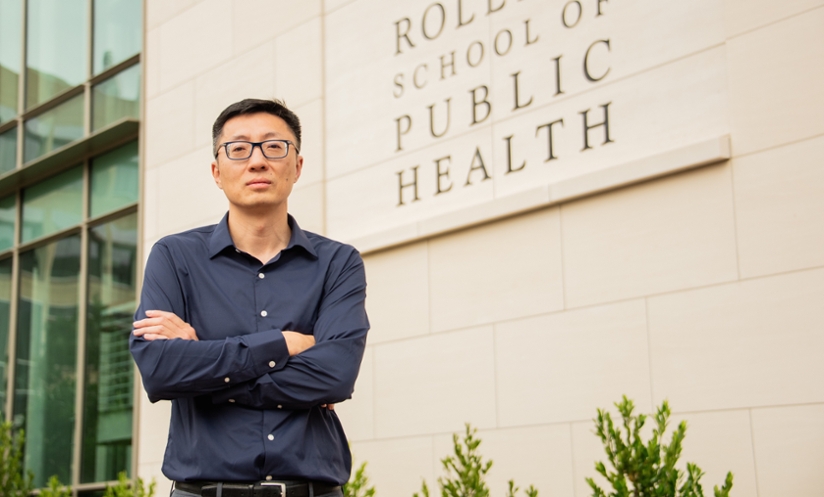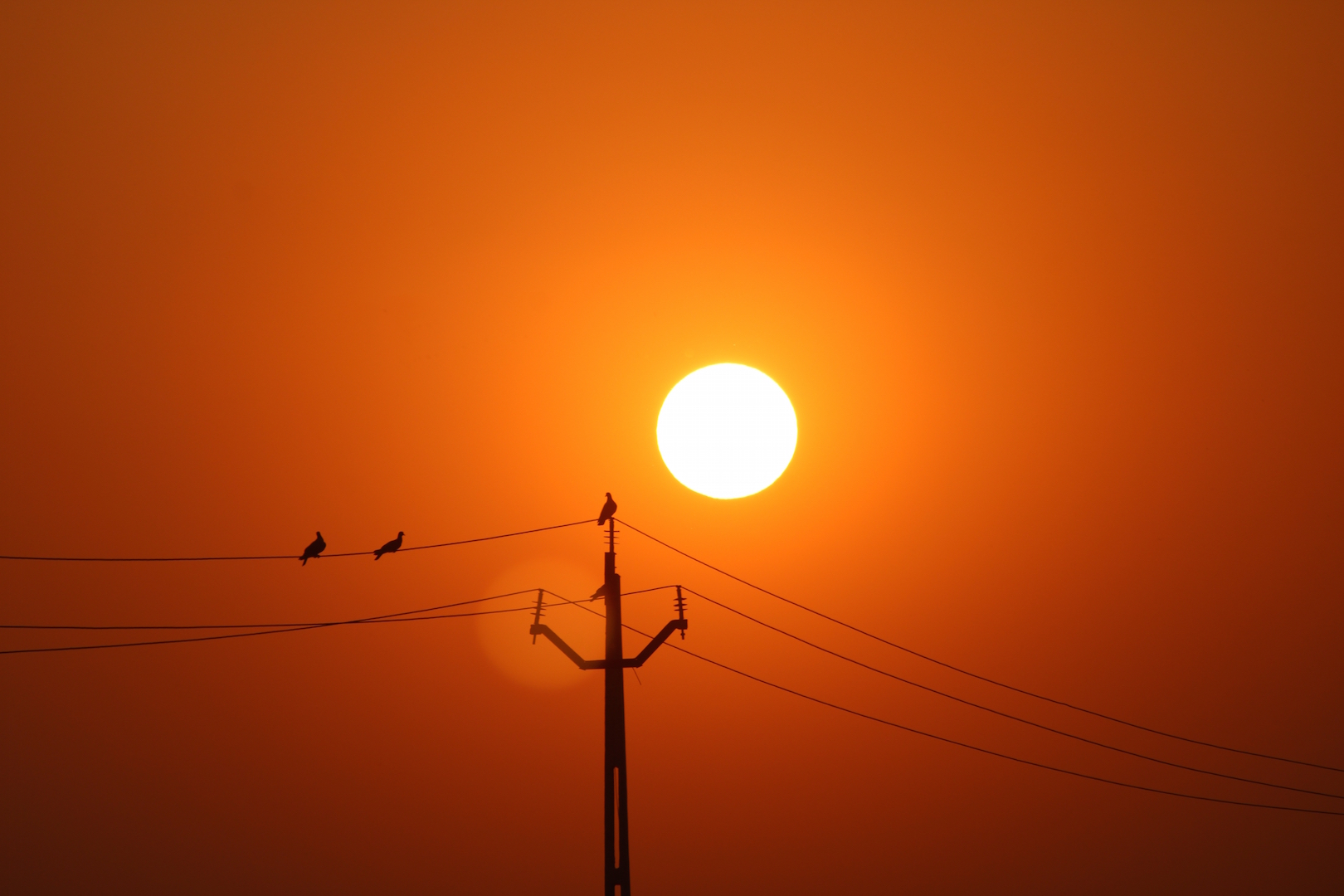Changing Climate Presents Major Threats for Southeast, Opportunities for Future

By Kelly Jordan
Last Tuesday, the U.S. Global Change Research Program released its Fifth National Climate Assessment (NCA). This comprehensive report pulls together science-backed evidence to communicate about current and future threats related to climate change in the United States at both a national and regional level and across a number of fronts, including air and water quality, the economy, natural disasters, human health, and more.
The Southeast region—like the rest of the nation—is under threat. Yang Liu, Chair and Gangarosa Distinguished Professor of environmental health, helped to identify some of the big takeaways from the report.
What are the biggest climate-related threats facing the Southeastern United States?
Heat waves are intensifying. They are longer and more frequent. Sea level rise threatens infrastructure through coastal flooding and impacts coastal city sewer systems.
With rising sea levels, salt marshes will need to push more inland in order to survive, but inland regions are often already occupied. So, that squeezes the space of marshes and wetlands. Extreme weather, rainfall, and tropical storms will increase and impact both inland and coastal regions.
We’ve seen this happening in Atlanta. When you have rapid rainfall, under-resourced underrepresented communities tend to suffer the most from urban flooding because drainage is just not sufficient. This in turn can lead to a lot of health problems like mold, the mixing of sewage and surface water, and even carbon-monoxide poisoning.
The report acknowledges these existing threats and that they are projected to intensify.
What has this region done well since the previous 2018 assessment? Have we made any progress?
I’m actually encouraged by this round of the NCA for a couple of reasons. The first is that the NCA acknowledges that adaptation is happening, which is very important. Previous climate assessments emphasized the mitigation and impacts of climate change. This time it is also reporting that people are actually taking action, which is great.
In our region in particular, local municipalities have started climate action and adaptation planning in order to beef up their resilience. The report also mentioned that indigenous communities—especially in lowland areas of the Southeast—are taking action trying to preserve their culture and way of living. These two aspects are very encouraging.
Where do you see opportunities for improvement?
The report acknowledges that climate change is outpacing our adaptation efforts dramatically. The planning process is scattered and is often self-initiated and uncoordinated. Some municipalities are using outdated data. So, the future they are trying to plan for may not be the future that the most up-to-date models are projecting. I see that as an opportunity for a research institution like ours to contribute.
What could be done better in terms of coordination?
The first thing I would do is to try to plug in to the current infrastructure. There are multiple climate data warehouses in the Southeastern region. I did a quick search and realized none of them actually involve health. They talk about ecosystems, urban planning, transportation, agricultural processes, but health is not part of the picture. The first thing I as a researcher would do is to find a way to be plugged into the system and bring the voice of health to the table.

What are some of the impacts we’re seeing on human health in our region?
The Southeast is one of the most rapidly growing regions in the country. That has a two-fold impact. The urban areas and coastal areas—Atlanta and Miami metro; and the Georgia, North Carolina, and Florida coasts will see 25-50% population growth by 2050 as compared to 2010 levels. In addition, the rural Southeast will see up to 25% population reduction by 2050.
Population growth in urban areas put more people in harm’s way and on the coast too. So, now more people are closer to climate risk factors. The rural municipalities will have an older and shrinking population, less revenue, fewer resources to recover from any climate risks, and less ability to adapt to unavoidable risks (due to factors like a small tax base, underinvested infrastructure, limited Internet bandwidth, etc.). Population growth is a double whammy.
In terms of health, because of the warming climate and the expansive vegetation coverage in the Southeast, this round of the assessment notes air pollution will intensify for meteorological reasons and human-caused reasons. We will likely see more ozone production due to higher temperatures, more humidity, and stronger sunlight. We’ll see particulate matter increase due to stronger secondary particle production and more prescribed fires. The report also mentioned pollen levels of certain species might go up. When you have a longer growing season and warmer temperatures, you tend to have a longer pollen season which can be problematic for people with asthma or other respiratory symptoms.
Also, heat waves are a huge problem for pregnant women, immunocompromised people, outdoor workers, older populations, people experiencing homelessness, and athletes because they are more vulnerable to ambient heat.
Warmer temperatures mean that many disease factors will now be able to survive winter, like Lyme-disease carrying ticks, and certain mosquitoes that carry West Nile virus and Zika. So, we are likely to see a spread in vector-borne diseases in our region.
Are these environmental impacts inevitable?
Exposure will inevitably increase. Though, that does not necessarily mean vulnerability and risks will increase. We can beef up resilience to combat these exposures and minimize their health impacts. We can adapt.
How are racial and social inequities playing out in terms of who is bearing the brunt of climate change?
The heat burden is disproportionate and it appears that under-resourced communities, and Black, indigenous, and other people of color (BIPOC) are more exposed than more affluent communities.
We have specifically observed such an effect in Atlanta, where the impact of structural racism and redlining continue to persist. Satellite-driven models together with ground measurements simulated air temperature contrasts in the city and found them to be proportional to income and to demographics. A lot of the redlined communities have less green space and more poorly insulated buildings. They suffer more from the urban heat island effect.
A major issue with our warming climate is that night time temperatures will also rise, people will not get that relief at night. The body will not have that time to recover.
What types of work are Rollins researchers doing to address the challenges articulated in this report?
When I read this chapter, two things needed in the region jumped to mind. One is that information imbalance and addressing how to effectively disseminate information to facilitate and accelerate decision-making. Emory Provost Ravi Bellamkonda recently established the Emory Climate Research Initiative. One of the research pillars is development of a climate dashboard for Georgia.
It is ongoing and the idea is to bring the most relevant, most up-to-date climate knowledge to different stakeholders. We could also do our own policy analyses, and present analytics, stories, and case studies based on that information. Hopefully, we will be able to push out the latest information to engage different communities.
The other project to note is that we recently were funded by the National Institutes of Health to establish the Climate & Health Actionable Research and Translation Center (CHART). CHART’s research directly addresses heat disparity in the urban setting. We aim to answer the question of differential susceptibility to heat in metro Atlanta. We want to know who is more at risk, how an individual’s resources constrain their perceptions to heat, how their behaviors can impact their heat exposures and health outcomes, and what sort of physical/environmental factors would contribute or reduce their heat-related illnesses. These are knowledge gaps we are addressing.
This center also has the vision to eventually become a knowledge hub for climate research, community engagement, and capacity building. It’s not just about publishing more papers. We also want to translate that knowledge for community partners and decision-makers, and will develop resources to train medical students and clinicians who will serve communities directly impacted by climate-related health outcomes.
The U.N. Climate Change Conference (COP 28) is taking place Nov. 30 through Dec. 12. What aspects of this year’s conference stand out to you?
COP 28 will be the first ever COP with health as a centerpiece, so I will be watching closely for any discussions or initiatives related to human health coming out of COP. Emory is an official partner of the Lancet Countdown system. The Lancet Countdown Report is always timed around COP to help stimulate discussions there. This latest report [which Liu and his former postdoc Yun Hang and current postdoc Qiao Zhu are authors on] launched last week, and highlights a lot of issues related to the accelerating harm and the inadequate preparation and adaptation. The countdown report also always calls for action.
There is still a chance that if we act now we won’t end up in a 3 degree Celsius global warming situation. People can make a difference. It is not too late to prevent further damage.


